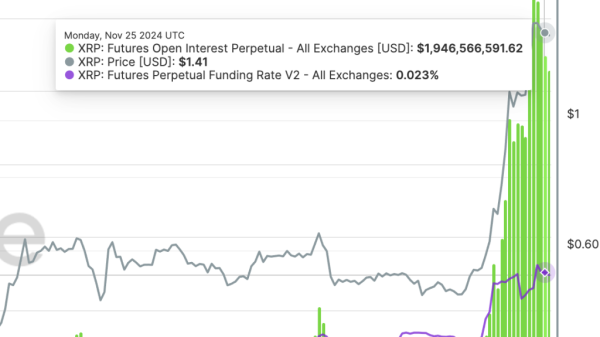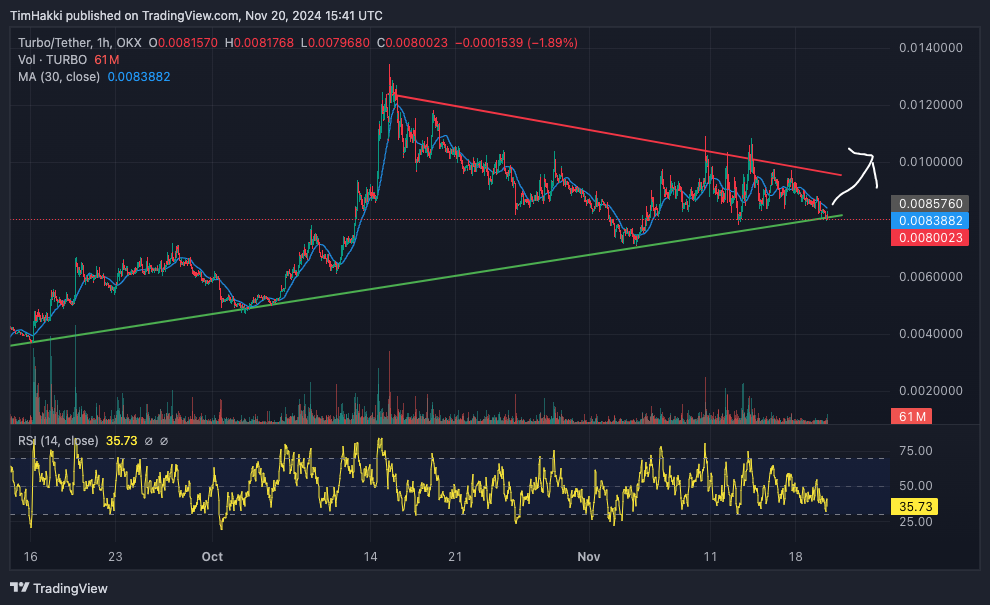Understanding the Plunge of Turbo: A Detailed Assessment
The world of cryptocurrency is replete with sudden fluctuations. Despite promising beginnings, it is not hard for some digital assets to witness a substantial drop in performance. In particular, we delve into the case of Turbo, a digital currency that saw a significant 30% fall from its all-time high (ATH) in just 30 days.
Turbo’s Phenomenal Rise
Turbo emerged in the rapidly evolving crypto market with an almost immediate impact. The cryptocurrency quickly gained appreciation from traders and investors, intrigued by its dynamic approach and lofty goals. In a short period, Turbo gained significant traction, reaching an all-time high, a feat attributed to its well-designed infrastructure and the growing acceptance of digital tokens.
Turbo’s Promise of High-Speed Transactions
A key promise of Turbo was its potential for high-speed transactions and secure trading environment. This pledge attracted considerable interest from individuals and businesses alike, keen to incorporate a fast, reliable, and cost-effective alternative into their financial operations. Turbo’s unique emphasis on reducing transaction fees and times was a game-changer in the industry’s standard practices.
Investors were attracted to Turbo’s neat solutions to two pressing problems in the cryptocurrency scene: slow transaction speeds and high transaction fees. Turbo made it possible for individuals and organizations to conduct transactions at lightning-fast speed, while also promising minimal transaction cost, a combination that initially created quite a stir in the cryptocurrency scene.
Factors Leading to the 30% Drop
Despite the promising start and all the potential, Turbo experienced a shocking 30% loss from its ATH in the temporary period of a month. Several factors might have led to this startling plunge.
First, the volatility endemic to the crypto market played a significant part in Turbo’s downfall. Cryptocurrency prices can swing wildly due to various reasons: technological changes, regulatory news, market manipulations, and even changes in the broader economic environment.
Secondly, despite its novel approach, Turbo faced stiff competition from other cryptos offering similar features and promises. The sheer number of digital currencies flooding the market tends to dilute individual coin’s unique value propositions, thereby affecting its price.
Another element might be the high-speed decentralization feature of Turbo. While it adds a layer of differentiation, it may also have added to user uncertainties about its sustainable performance over time. In the crypto world where trust and security are essential elements, this concern could have certainly instigated a sell-off.
Lastly, the market sentiment and overall investor confidence affect the success of a cryptocurrency. If an air of doubt or loss of faith circulates among investors, the effect can be catastrophic, as observed in Turbo’s case.
The Future of Turbo
Despite the significant setback, the road is far from over for Turbo. Its strong value proposition of high-speed transactions and low costs continues to stand out in the continually evolving crypto market. It’s too soon to write the obituary for the currency, as the winds of the crypto market are perennially unpredictable.
In conclusion, while the rapid fall of Turbo is disconcerting, it paints a picture of the unpredictable nature of the cryptocurrency market. It serves as a reminder to investors to make measured decisions and always research thoroughly before plung






























